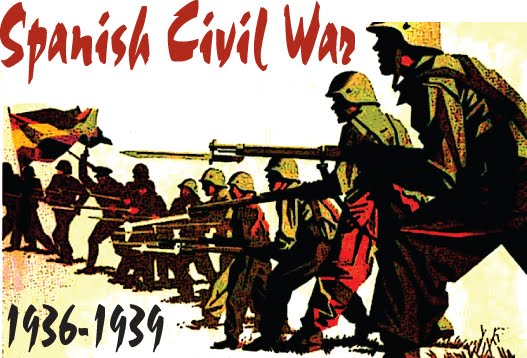In July 1936, Spain was ruled as a monarchist republic. Strikes and political maneuvering marked months of economic turmoil. Into this cauldron stepped Spanish Army General Francisco Franco, commander of the armies of Spanish Morocco. He attempted a coup de état in late July 1936, coming to Madrid from Morocco borne by German and Italian aircraft.
What was seemingly a local dispute between different political factions became an international incident. The Loyalists, true to their Communist affiliation, were hostile to religion. Catholic churches were closed. Franco sought and received the support of the Church. The forces loyal to the Monarchy were supported by the Soviets, and thousands of foreign nationals came to form “Brigades” that would fight for Spain. Franco was supported by Germany and Italy. The world was not prepared for the glimpse of the weapons and tactics that would mark the Second World War.
Hundreds of Junkers Ju-52 sorties flew 13,000 troops and their equipment from Franco’s Moroccan Army to Spain in July 1936. Over 100,000 troops came from Italy, with modern equipment and advisors for the Fascists. The Germans sent the Condor Legion, 18,000 men from the Wehrmacht and the Luftwaffe, to use the new arms Germany was producing in “test” situations — actual combat. The Germans perfected the dive-bombing techniques using Ju-87 Stukas, and began the terror from the air — unrestricted area bombing of civilian centers — attacking the town of Durango on March 31, 1937.
But the world would take notice of the total destruction of the town of Guernica, the old Basque capital, on April 26, 1937. Ju-52s pushed incendiaries, high explosives, and antipersonnel bombs out of their cargo doors. The town had no military targets. 1,654 people were killed and 889 injured out of 5,000 residents.
The effect of foreign aid was telling. Soviet aid, organized by the Comintern (Soviet agency to promote worldwide Communism,) was purchased by Loyalist gold. The International Brigades were ill equipped and poorly trained, and only 250 Soviet flyers joined in combat. At first, their I-15 Polipokarov monoplanes easily bested the Condor Legion’s Henschel Hs-123 biplanes. Hitler sent the new Messerschmitt Bf-109E, an all-metal, streamlined monoplane, and the Condor Legion found they had a potent weapon in their hands. In 1937 the United States applied the Neutrality Act to Spain, cutting off sales to both sides.
The Loyalists also spent as much time fighting each other as they did the Fascists, and this blunted their efforts. In 1939, Franco eliminated his opposition, and declared himself Generalissimo of Spain.
Franco clearly supported the Axis. The Blue Division of Spanish Regular Army troops was sent to the Soviet Union to fight for the “extermination” of Communism. Franco allowed tankers to refuel U-boats, and rallies agitated for the return of Gibraltar and French Morocco to Spain. German spies were not impeded.
Hitler and Franco met to discuss Spain’s entry into the war on Germany’s side in 1940Franco demurred, saying Spain was not prepared to fight. As the fortunes of war changed for Germany, Spain tried to appear as an Ally, severing diplomatic ties with Japan in April 1945. But at Potsdam the victorious Allies decreed that Spain could not be a founding member of the United Nations, denying entry until 1955.
Franco, a shrewd politician and dictator, stayed in power in Spain until his death in 1975, longer than any other political leader of World War II. Only Japanese Emperor Hirohito lived longer.
.jpg)